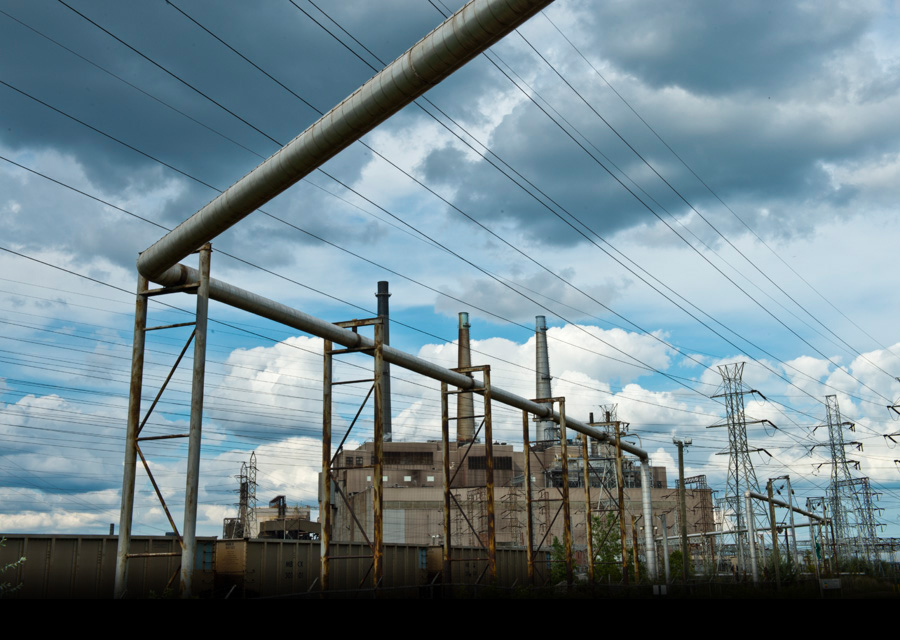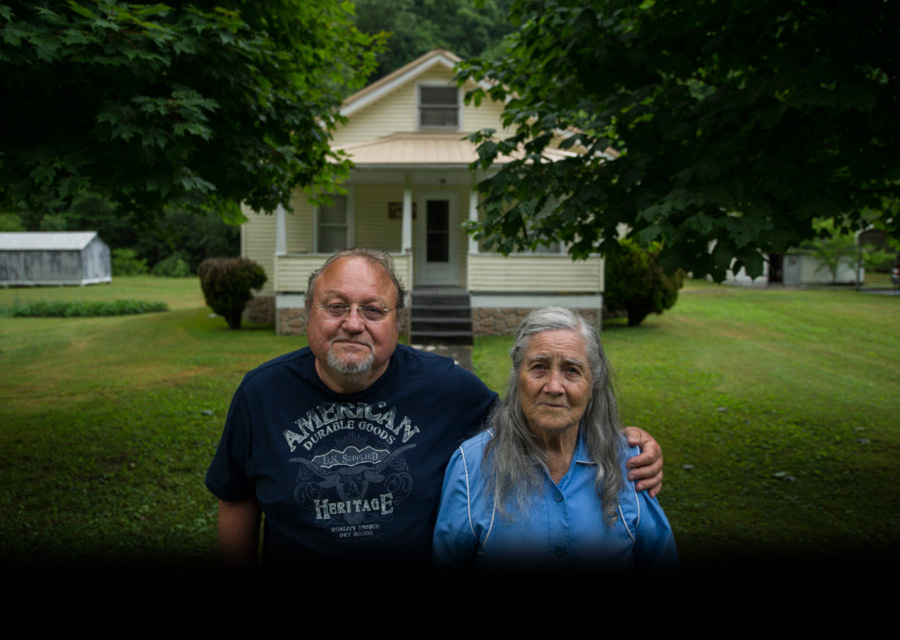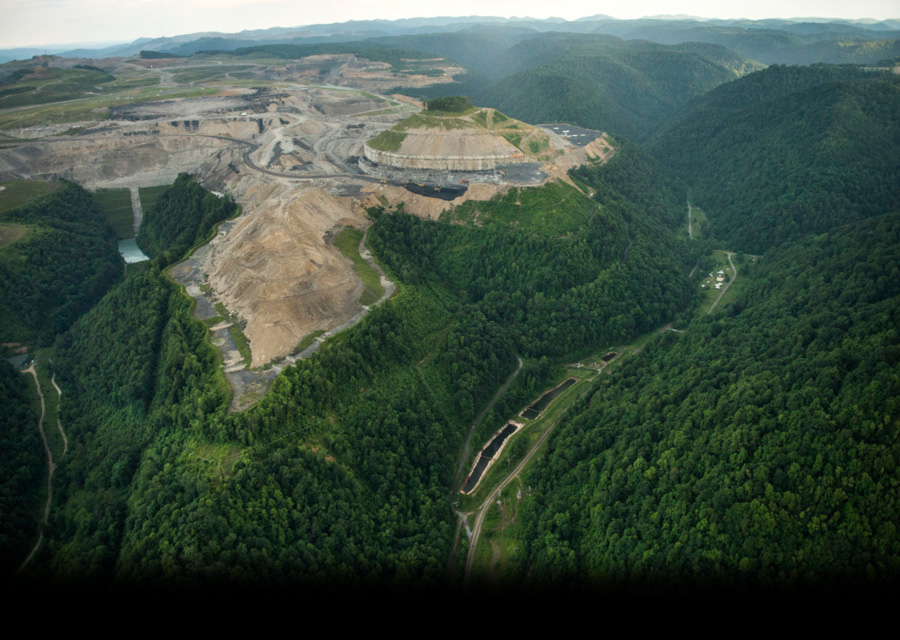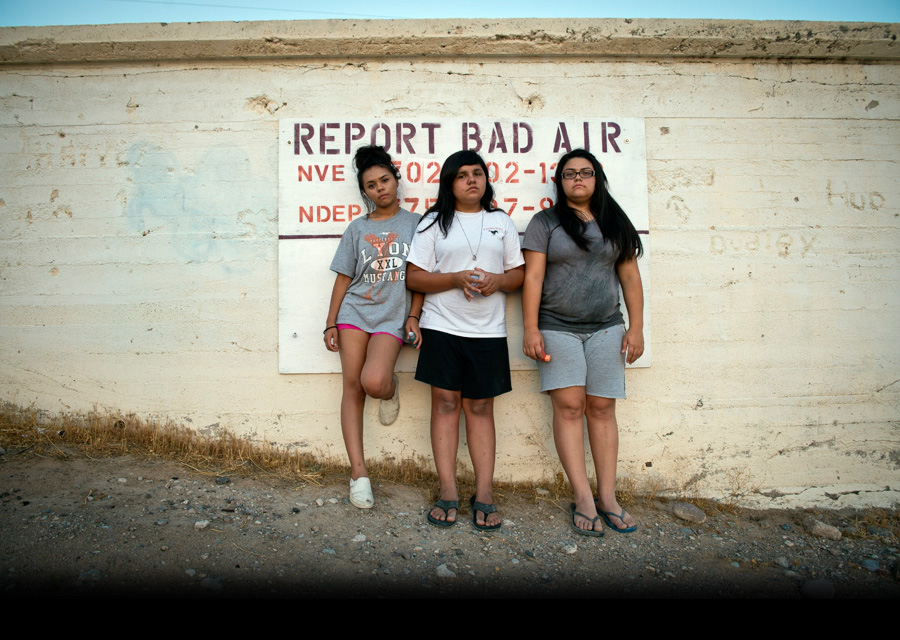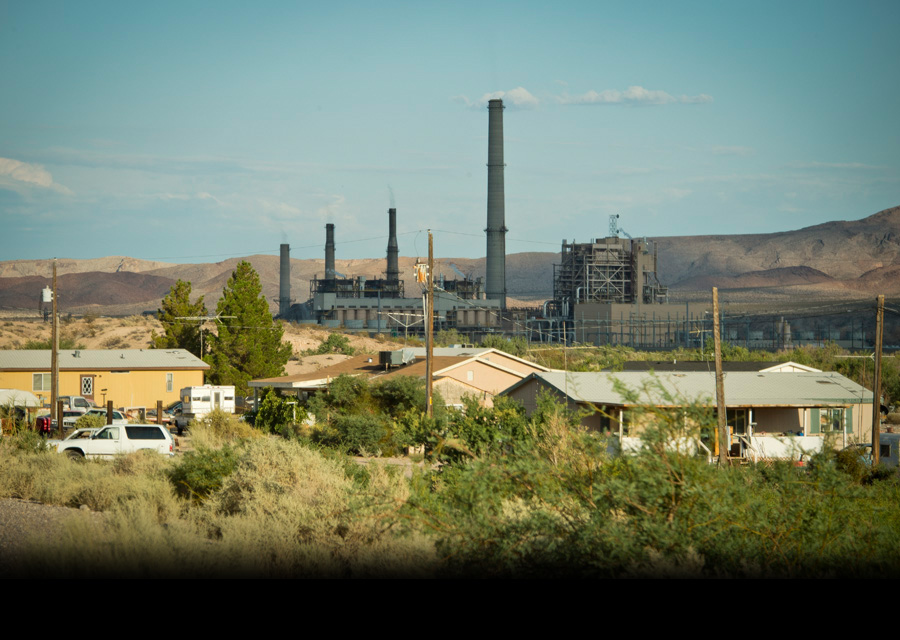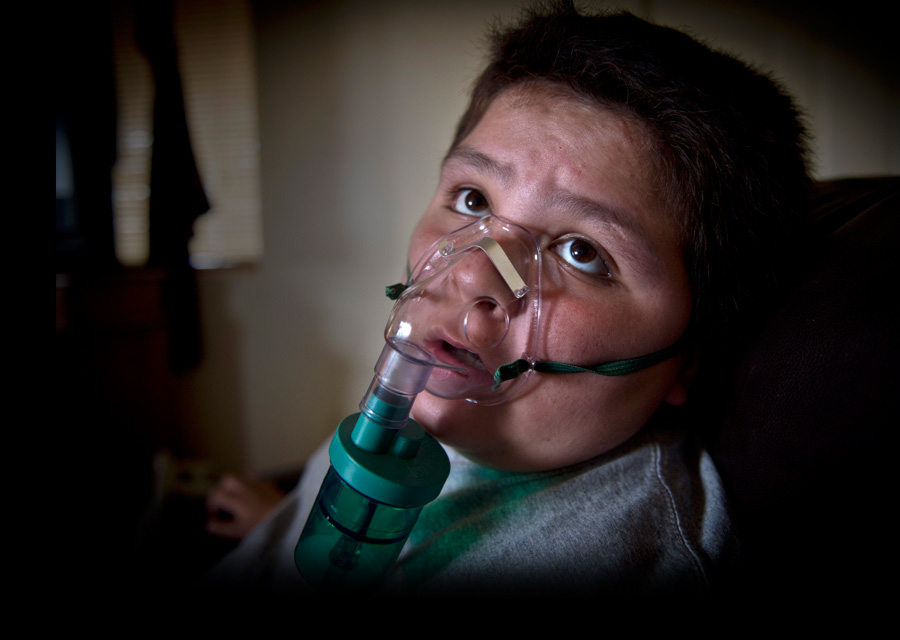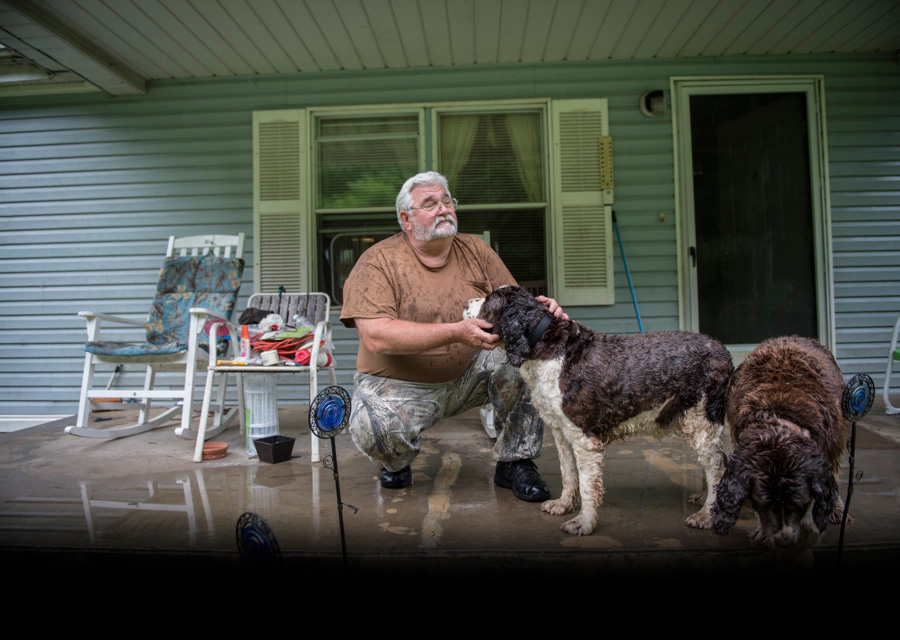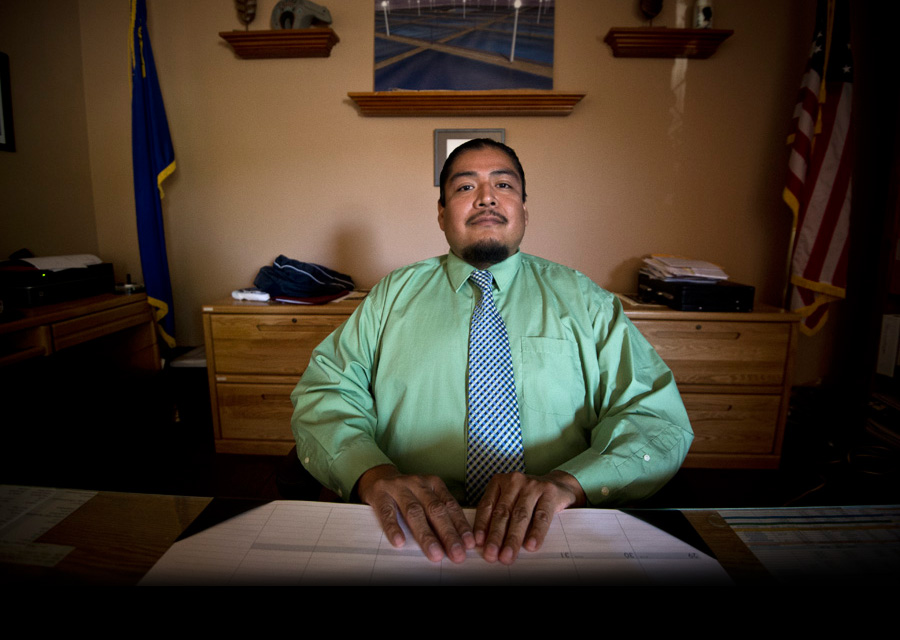Marianna Hildreth, 7, holds her cousin Mariyah McGhee, 1, who has asthma, in their grandmother's kitchen in River Rouge, Michigan. | Ami Vitale/Panos Pictures
Michigan's River Rouge Power Plant. A nonpartisan study by the Clean Air Task Force calculated that particulate pollution from the plant causes more than 40 deaths, 70 heart attacks, and 700 asthma attacks each year among nearby residents. | Ami Vitale/Panos Pictures
Lindytown, West Virginia, was once home to dozens of families, many with roots there dating back generations. In 2008, residents started selling their homes and moving because of a nearby mining operation. Today, only one original family remains: Roger Richmond and his mother, Quinnie. | Ami Vitale/Panos Pictures
An aerial view of the mountaintop-removal mine that looms above the Richmond property. The home where Roger and Quinnie Richmond is shown at right. "Sometimes it gets lonely now, a little bit," Roger said. "Momma will be sitting on the couch and she'll say, 'There ain't no more traffic.'" | Ami Vitale/Panos Pictures
Sisters Aaliyah, Ayona, and Zayda Hernandez near their home on the Moapa Band of Paiutes Reservation, about an hour north of Las Vegas. Since 1965, coal ash from the nearby Reid Gardner Generating station has been dumped into uncovered ''ponds'' less than a half mile from their neighborhood. | Ami Vitale/Panos Pictures
Combustion waste from coal-fired power plants, known as coal ash, contains toxics such as mercury, arsenic, selenium, and lead. Moapa tribal members believe that the ash, which blows into their town in dust storms, has caused a wide range of illnesses and many premature deaths among the 200 residents. | Ami Vitale/Panos Pictures
About a mile from her River Rouge, Michigan, home, Nikeya Aaron, 9, enjoys a moment of weightlessness in Belanger Park, which is sandwiched between a coal-fired power plant and a massive steel mill. River Rouge residents also deal with emissions from a nearby sewage treatment plant and an oil refinery. | Ami Vitale/Panos Pictures
Lane Miller demonstrates his nebulizer in his home on the Moapa Band of Paiutes Reservation in Nevada. "At least once a month he has to use a nebulizer to open up his lungs," his mother, Kami, said. "If I neglect it, he has to go on steroids or it can turn into pneumonia or bronchitis." | Ami Vitale/Panos Pictures
Jayvon Riley, 11, fishes in the Detroit River with his friend James Beverly, 7. Health advocates routinely pass out flyers along the river warning that certain kinds of fish shouldn't be eaten because they might be contaminated. | Ami Vitale/Panos Pictures
Charles Bella on the porch of his home in Blair, West Virginia. Dust, noise, and explosions from a nearby mountaintop-removal mine have caused Blair's population to dwindle from 700 people in the 1990s to fewer than 50 today, according to the Blair Mountain Heritage Alliance. | Ami Vitale/Panos Pictures
From right: Alisha Winters invites Kamajia and Kerriona Corbin to a Sierra Club–sponsored community meeting featuring University of Michigan professors who recently published a study showing how air pollution affects children's health and academic scores throughout the state. | Ami Vitale/Panos Pictures
William Anderson, tribal chairman of the Moapa Band of Paiutes. The tribe plans to construct a 350-megawatt solar power plant capable of providing electricity to 100,000 homes. ''We want to show our neighbors that there are ways to produce energy other than polluting the earth,'' Anderson said. | Ami Vitale/Panos Pictures
Paula Swearengin gets her head shorn by the late Larry Gibson, founder of the Keeper of the Mountains Foundation. On Memorial Day 2012, more than a dozen women assembled on the steps of the West Virginia State Capitol in Charleston to have their heads shaved to protest mountaintop-removal mining. | Ami Vitale/Panos Pictures
HOME > OVERVIEW

WEST VIRGINIA

MICHIGAN

NEVADA


